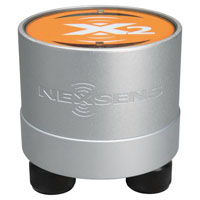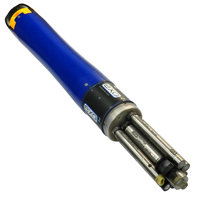 Located on the shores of Kentucky Lake in southwestern Kentucky, the Hancock Biological Station provides scientists with a base of operation for field research and offers students field-oriented classes, individualized instruction, independent research, and close interactions with researchers and faculty. HBS is also the field facility for the Center for Reservoir Research and for the Ecological Consortium of Mid-America.
Located on the shores of Kentucky Lake in southwestern Kentucky, the Hancock Biological Station provides scientists with a base of operation for field research and offers students field-oriented classes, individualized instruction, independent research, and close interactions with researchers and faculty. HBS is also the field facility for the Center for Reservoir Research and for the Ecological Consortium of Mid-America.
The region is diverse in aquatic and terrestrial habitats. Southwestern Kentucky has one of the largest densities of major rivers and reservoirs of any region in the world. Kentucky and Barkley Lakes, ponds, and streams are in close proximity. Kentucky Lake is one of the largest reservoirs in the United States (187 miles long) and joins a canal to Lake Barkley; together they have 3,700 miles of shoreline and 250,000 surface acres.
NexSens Technology was asked to provide a research-grade weather station on the roof of the biological station and a water quality monitoring site on Kentucky Lake to promote research opportunities.
Multiple real-time monitoring sites
 The weather station is equipped with an RM Young 05103 wind monitor to measure wind speed and direction. An RM Young 52203 tipping-bucket rain gauge was selected to obtain high accuracy rainfall measurements using a proven tipping-bucket mechanism. The RM Young 61202 barometer and 41382 temperature and relative humidity probe are used to complete the sensor suite and provide a complete picture of current weather conditions.
The weather station is equipped with an RM Young 05103 wind monitor to measure wind speed and direction. An RM Young 52203 tipping-bucket rain gauge was selected to obtain high accuracy rainfall measurements using a proven tipping-bucket mechanism. The RM Young 61202 barometer and 41382 temperature and relative humidity probe are used to complete the sensor suite and provide a complete picture of current weather conditions.
On Kentucky Lake, a second field site was installed for water quality measurements. Two YSI water quality sondes were installed within the same four-inch PVC deployment pipe. The top sonde measures temperature, conductivity, pH, dissolved oxygen, turbidity, and chlorophyll. The sonde at the bottom of the lake measures temperature, conductivity, pH, dissolved oxygen, and turbidity.
Each monitoring instrument at the remote sites interfaces with radio telemetry data loggers to transmit weather and water quality data to a single, centralized computer database. The rooftop weather station acts as a repeater to send the data from both sites wirelessly into the building. HBS researchers selected radio telemetry to transmit data into the project office, eliminating the need for holes and wires on top of the roof.
With the help of the Murray State University MIS department, HBS researchers developed a web-based interface for viewing environmental data via the HBS website. This provides virtually unlimited access to HBS researchers throughout the United States for use in their research or to determine weather and lake water quality conditions remotely for planning sampling trips.
The NexSens X2 Environmental Data Logger offers the latest in real-time monitoring technology with wireless communication, large plug-and-play sensor library, and ultra-low power consumption.
The YOUNG tipping bucket rain gauge uses a proven tipping bucket mechanism for simple and effective rainfall measurement.
The YOUNG 05103 wind monitor is a field-proven high performance wind sensor, making it ideal for a wide range of wind measuring applications.
The YSI EXO represents the next generation of water quality instruments from YSI. The EXO2 sonde includes six sensor ports and a central anti-fouling wiper option.




